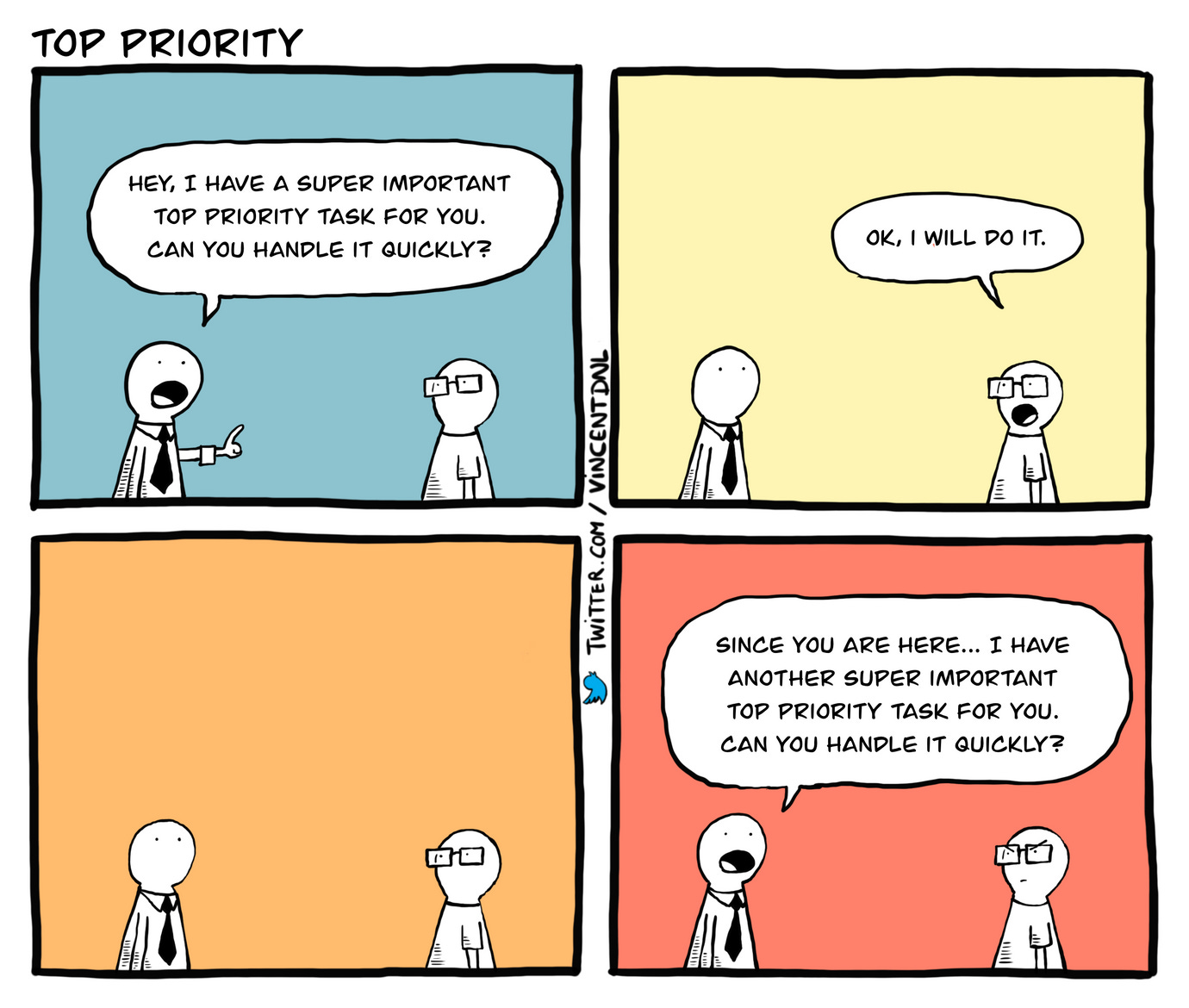👋 Hey, I’m Tina. I’m glad you’re taking this moment to slow down with me. Each time I go deep into something I think will help you design better products and nurture your career.
In this edition, we will explore 5 different ways to prioritize your design ideas.
When we are flooded by ideas, it's best to let them flow. Creativity is about connecting dots, and one dot can lead us to something impactful.
But ideas are easy to come by, so it's worth taking a pause to see which ones are really worth chasing.
Having a structured way to prioritize makes it a whole lot easier. Eventually, what you end up with might look like this:
Green bucket – These ideas pass every checkpoint and are ready to move ahead.
Red bucket – These ideas miss key marks and should be stopped.
Yellow bucket – These ideas are almost there but need fine-tuning before they can proceed.
Pit stop – These ideas show promise, but the road isn’t clear yet. Set them aside for when the timing’s right.
Winning ideas aren’t always the all-time greats; they’re just the best fit for the moment, given resources and goals.
The idea sieve
Imagine pushing your ideas through a sieve, letting the unnecessary fall away, and keeping only the ones that stand the test.
First, start with a clear objective. Say you want to convert more users into paying customers. Any ideas that don't directly impact the goal should be set aside.
Second, narrow them down with dot voting (if there are too many). It’s a quick way to see where the general team consensus lies without getting bogged down in details.
Third, zoom out and look behind those ideas. What problems are they solving? What assumptions are standing behind each of them? Sometimes several ideas try to solve the same problem from different angles – you want to be mindful of that.
Lastly, get specific. This is where you pick a prioritization method that makes the most sense for your team. There are tons of them online, but I will cover those I had the most fun with.
Travel Light framework
Imagine you're packing for a trip: Select the top 3 ideas as if you're choosing the most essential and enjoyable items to take with you. Prioritize what's practical, exciting, and adds the most value.
Why I like it: It’s fun, simple, and gives a quick read on what the team values most.
Why it is not always cool: Without specific criteria, personal biases may influence choices.
Impact vs. Effort Matrix
Visualize a grid that places ideas based on their potential impact and the effort required for execution. The objective is to prioritize ideas that yield the highest impact with the least amount of effort.
Why I like it: It works great if you want to review many ideas in a short time.
Why it is not always cool: Complexity can mean different things: complex from a technical perspective, no clear solution yet, GDPR-tricky, high cross-department collaboration, etc. As a result, many ideas can end up in one bucket for different reasons.
RICE framework
Rank ideas based on four key factors — Reach, Impact, Confidence, and Effort, giving each idea a score from 1 to 5. To calculate the score, use the following formula: Reach + Impact + Confidence / Effort.
Reach is about how many people it affects within a specific timeframe. Impact is the degree of the effect on users and business. Confidence reflects how certain your team is about estimates for reach and impact, and Effort means the work required.
Why I like it: It’s a more analytical approach and helps to separate impact from reach and confidence which makes the evaluation a bit more precise.
Why it is not always cool: It doesn't solve the ambiguity of 'effort', but you could break it down into Technical and Non-technical Effort to stay more objective.
Feasibility, Desirability, and Viability Scorecard
Score each idea based on how feasible it is (can we do this? is it technically possible? is it legally compliable?), how desirable it is (do users actually want this? does it solve a real pain point?), and how viable it is (will this work long-term? will it be profitable? does it fit strategy?). The best ideas score well in all three areas.
Why I like it: It’s a strategic way to think of ideas you feed into your product, ensuring you’re building for the long term, not just competing for short-term gains. Are you implementing something to compete only or can you leverage this long-term on the market?
Why it is not always cool: It’s less focused on immediate impact, so it might be not that helpful for evaluating more practical, down-to-earth ideas or solutions that aren’t heavily strategic.
Experiment canvas
Break down each idea into a mini-experiment: outline the hypothesis, how you can test it in the simplest way, and what success would look like. Ideas that are easiest and quickest to validate usually get prioritized.
Why I like it: This method forces you to think critically before making decisions, focusing on testing and learning over picking the "best" idea. It’s a great way to reduce risk and learn fast.
Why it is not always cool: If the problem space is still vague or complex, it can be difficult to define the right validation approach. Plus, it may not always account for long-term strategic value.
Get 30+ Notion templates for product design and growth. Buy once and enjoy lifetime access, with regular updates and new templates added!
In case you missed
I like writing about design topics through the lens of my experience. Here are some of my recent LinkedIn posts you might find interesting:
Designing product onboarding: 3 key milestones
How to test design ideas: 14 testing methods
Much love,
Tina Iurkova



